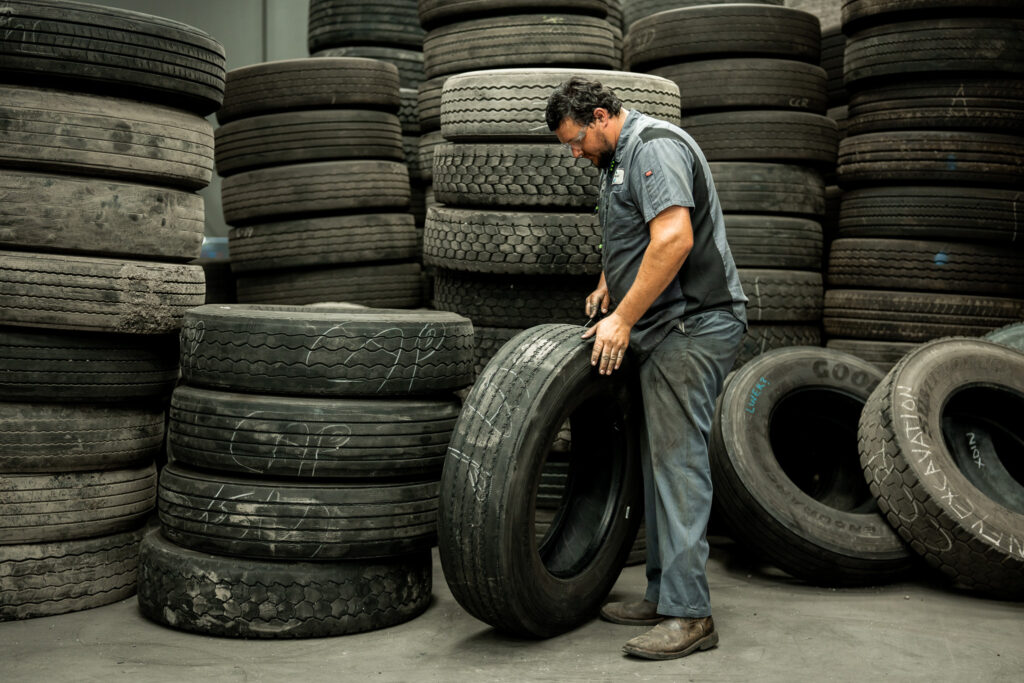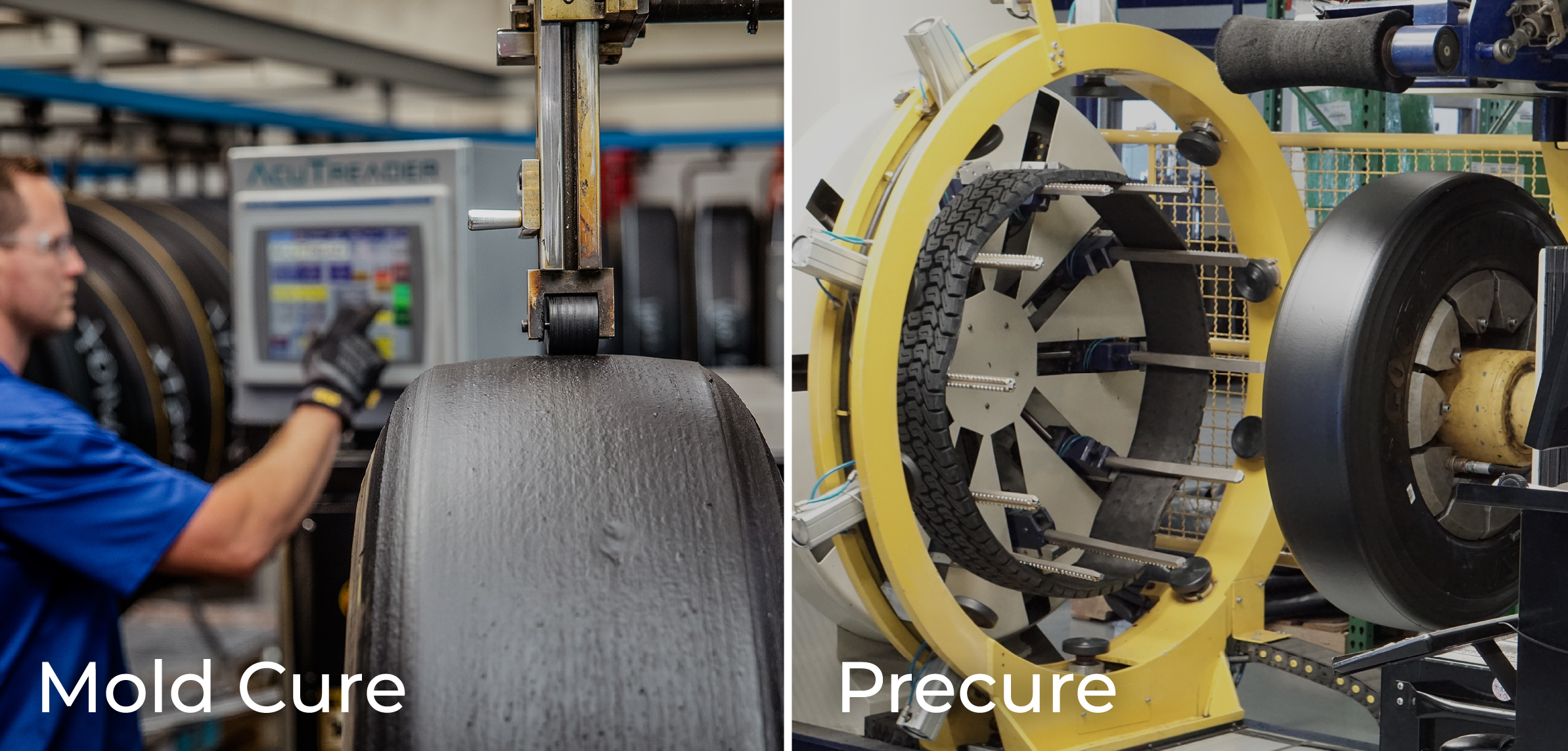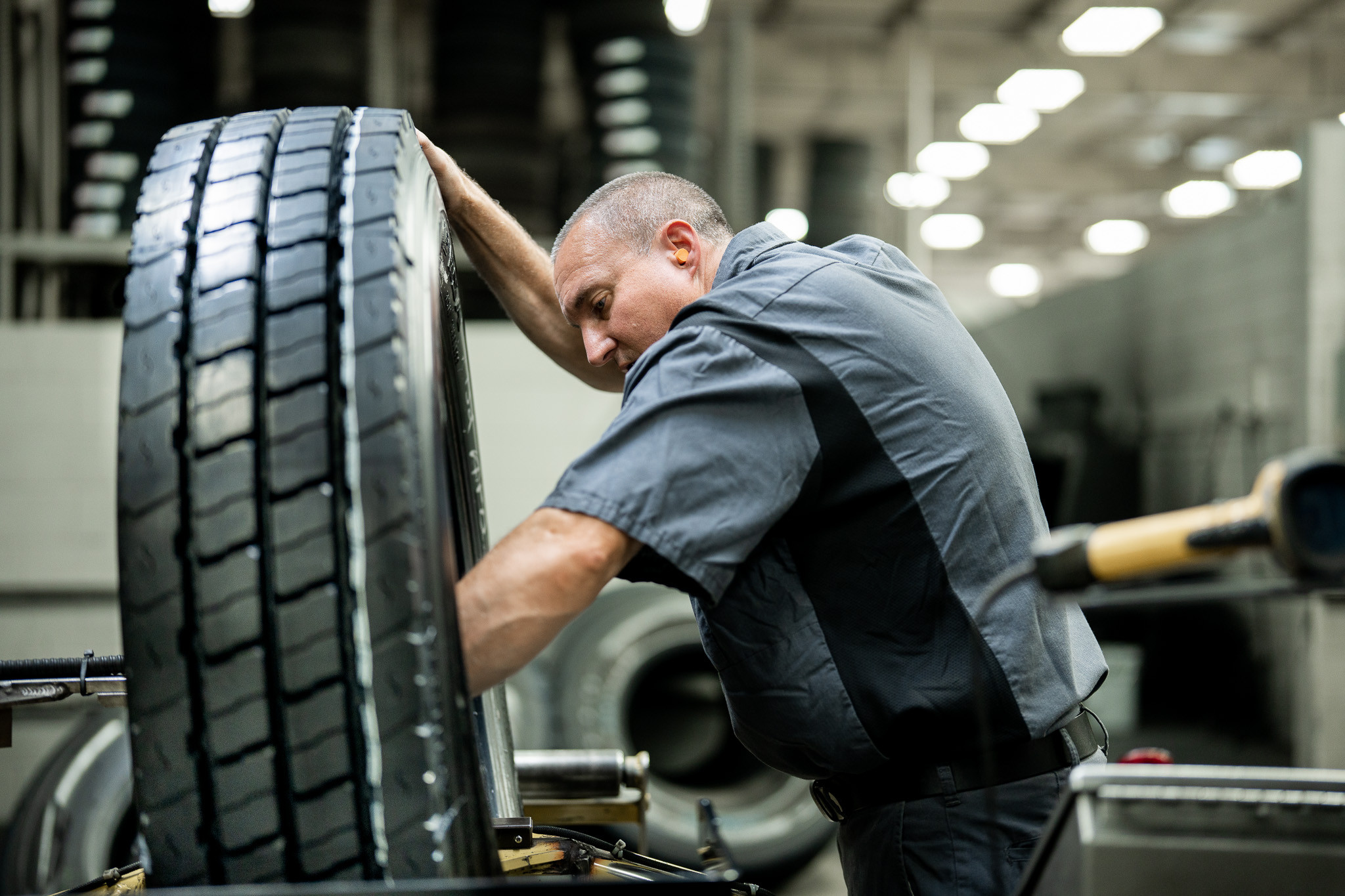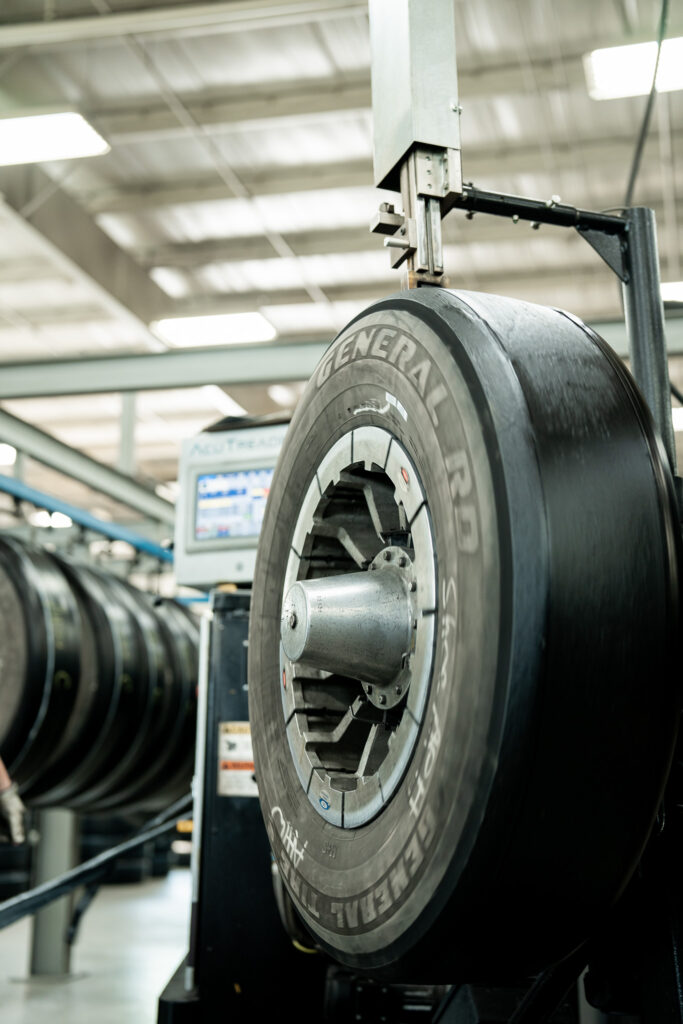
There are two main retreading processes: mold cure retreading (sometimes called hot retreading) and precure retreading (sometimes referred to as cold retreading). But when it comes to high-quality tires, the mold cure retreading process is the clear winner.
This guide lays out the differences between the mold cure and precure processes so that you can choose the right retread partner for your fleet.
Even though the final products vary, the process for mold cure and precure retreads begins in much the same way.
First, each tire candidate is carefully inspected by experienced technicians. The inspectors use specialized equipment to guarantee the integrity of the tire casing. No matter how worn the tread is, the casing must still be structurally sound enough to retread. And when casings do not pass the inspection, these compromised casings are discarded to ensure quality and user safety.
Once the tire casing is approved, the remaining original tread is then removed using high-speed buffers. This process removes worn rubber, truing the tires to an exact diameter and radius so that they are ready for retreading.
But here’s where the methods differ…

Precure retreading works by wrapping a new tread—which has already been vulcanized (sulfur and heat treated) with the new tread design—around the old tire casing and splicing it using a bonding agent known as cushion gum. The tire is then placed into a chamber to be cured.
When using the mold cured or remold process, raw (unvulcanized) rubber is wrapped around the tire in one continuous strip—similar to new tire manufacturing. Then, the tire is placed in a rigid mold to be cured.
The mold cure and precure retreading processes find commonality once more during the final step. After the retreaded tire has been removed from the mold, a careful final inspection is executed to ensure industry standards are met and that the tire is ready for sale.
With a trustworthy manufacturer and the latest production technology, the precure method can produce safe and reliable retreaded tires. However, mold cure products tend to be safer, more reliable, and of higher quality—with a process that’s almost identical to the way the world’s leading manufacturers produce new tires. And while the precure method does allow a company to produce a number of different sizes and treads at the same time, the bonding isn’t as secure as mold-cured tires, whose higher curing pressure results in a tighter bond and a cleaner finished appearance.
Keeping quality in mind is essential as you consider which retread supplier to partner with because not all retreads are created equal. Just like poorly manufactured tires, poorly retreaded tires have a higher likelihood of failing.
To help make sure you choose the right retread partner for you and your fleet, check out our buyer’s guide.
What do we mean when we say the mold cure retreading process is almost identical to the new tire production process? Well, from rubber extrusion to the curing press, these processes could be one and the same.
Much like the mold cure process, new tire components such as tread, sidewall, and apex are prepared by feeding uncured rubber compound through an extruder to shape the tire tread or sidewall profiles.
Once the profiles have been shaped, the new tire moves to the curing press. This is where the tire is vulcanized for a certain length of time at a certain pressure and temperature. The raw rubber becomes flexible and elastic during this process, allowing the curing press molds to be engraved with the tread pattern and sidewall markings.
The AcuTread® mold curing process is a highly advanced retreading system, engineered second to none. It allows us to produce tires that are built expertly for safety, uniformity, reduced heat buildup, and longer tread life. And the clean, modern manufacturing environment and advanced training programs foster a culture of quality that makes the AcuTread® process extremely successful.
Trained inspection technicians look for specific tire conditions that either qualify or disqualify the casings for the possibility of remanufacturing. The casing is checked for micro-porosity and injuries; when detected, they are repaired using a 2-piece cured repair system.

AcuTread® Computerized Buffing is specific to each type of casing. The precision of this machine provides a tolerance within 1/32″ in diameter. This results in one of the most uniform and consistent finished products on the market today!

A thin layer of high-tack, uncured cushion rubber is applied to the buffed casing. An exact specified width and depth automatically fill buzz-outs in the tread area. This thin layer of rubber becomes the base for the extruded tread rubber, promoting tread-to-casing adhesion values that rival that of new tires.

AcuTread® Precision Rubber Application uses a new digitally controlled extruder that applies a continuous splice-free strip. Matched tire diameters result in even loading, a smooth ride, even wear, lower cost per mile, and improved fuel efficiency.

AcuTread® Tread Molding and Curing Technology uses segmented curing presses with three heat zones to ensure minimal heat exposure to the casings while in the presses. AcuTread® mold curing uses high internal air pressure which results in superior adhesion values.

After the molding and curing process, there is a very thorough final inspection of the retreaded tire to ensure that the quality of the final product is at an unrivaled level.

Interested in the AcuTread® product? Find an AcuTread dealer near you!
Contact us for more information about our products, remanufacturing process, facilities, or solutions for your fleet.
Website by Northbound Studio